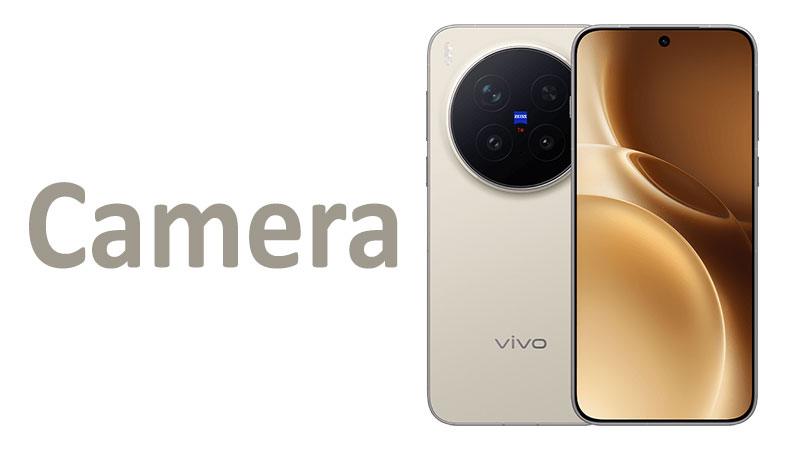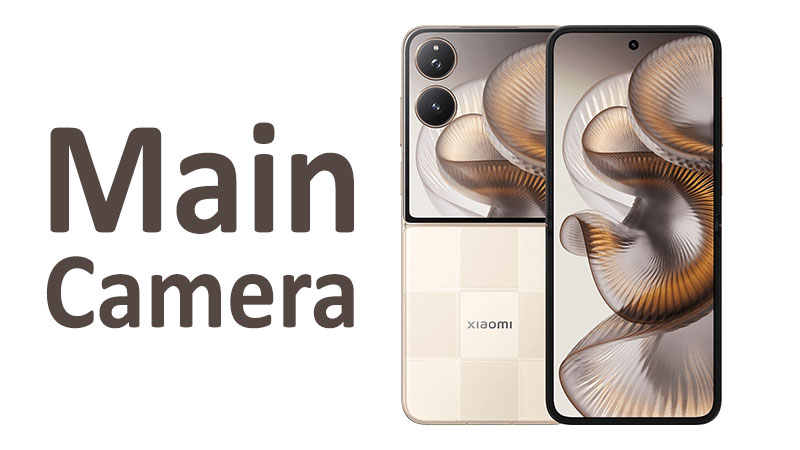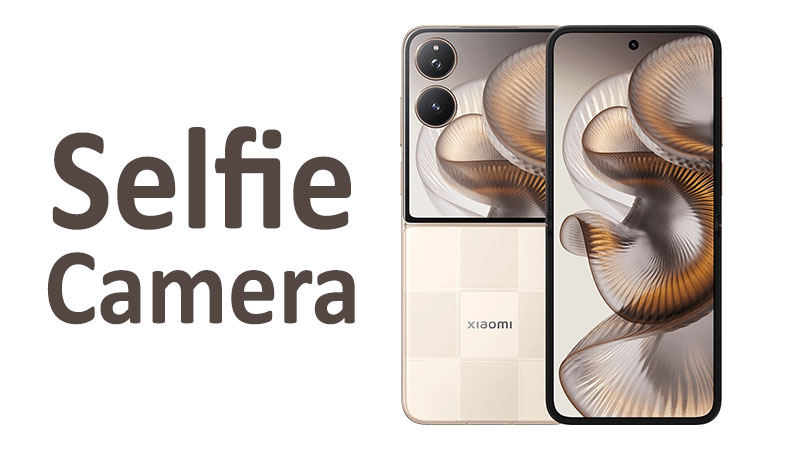This comprehensive vivo X300 Pro Camera review details the specs and real-world performance of this new flagship. The mobile photography market is intensely competitive today. Consumers demand professional-grade results from their pocket-sized devices. The vivo X300 Pro enters this demanding space with groundbreaking technology. It promises to redefine what a smartphone camera can achieve. We will explore every lens, sensor, and software feature. This article helps prospective buyers make an informed decision about this powerful camera system.
The Core Camera Architecture: A Zeiss-Engineered Powerhouse
The vivo X300 Pro leverages a strategic partnership with Zeiss. This collaboration ensures premium optical quality across all lenses. The device features a sophisticated triple-camera arrangement on the rear. This setup balances resolution, light gathering, and versatility. The foundation of this system is the integration of advanced optics and hardware. This combination targets both technical users and casual photographers.
Zeiss Optics and T∗ Coating: Clarity and Contrast
Vivo utilizes genuine Zeiss optics across the X300 Pro system. Zeiss is a respected name in professional photography. The lenses benefit from the famed Zeiss T∗ lens coating. This coating is crucial for minimizing unwanted reflections. It dramatically reduces lens flare and ghosting. This is especially noticeable when shooting bright scenes or at night. The resulting images show superior contrast and color fidelity. They are noticeably clearer than those from competing phones lacking this optical treatment.
Sensor Fusion: The Three Pillars of Imaging
The rear camera module is built around three distinct imaging tools. Each lens serves a specific, high-resolution purpose. First, there is the powerful 50 MP wide main sensor. Second, the revolutionary 200 MP periscope telephoto lens delivers unprecedented zoom. Third, the 50 MP ultrawide lens captures expansive scenes with precision. This fusion of sensors provides a complete focal range. It allows the user to master virtually any photographic scenario.
Deep Dive: The 50 MP Wide-Angle Main Sensor
The primary camera is often the most used sensor. The vivo X300 Pro equips a 50 MP sensor for its main wide lens. This sensor is paired with a 24mm equivalent focal length. This provides a classic, versatile field of view. Its large 1/1.28″ sensor size is a significant physical advantage. Furthermore, the large 1.22μm pixels help capture immense detail.
Low-Light Mastery: f/1.6 Aperture and OIS
The main sensor boasts an exceptionally wide aperture of f/1.6. This is critical for excellent low-light performance. A wider aperture allows more light to hit the sensor quickly. This means brighter, cleaner images in challenging nighttime conditions.
The camera system includes Optical Image Stabilization (OIS). OIS mechanically stabilizes the main lens. It corrects for handshake and subtle movement during exposure. This feature works synergistically with the large aperture. It allows for longer exposures without introducing motion blur. Users can capture crisp photos even in dim environments. The OIS ensures sharpness where competitors might struggle.
Specialized Comparison: The Wide Sensor Advantage
Compared to its predecessor, the X200 Pro (hypothetically), the X300 Pro offers a wider f/1.6 aperture. The previous model might have featured f/1.8. This subtle change significantly boosts light intake by over 30 percent. It directly translates to improved dynamic range. The competitor model from brand A might use a slightly smaller 1/1.3″ sensor. The X300 Pro’s 1/1.28″ sensor and larger 1.22μm pixels provide a distinct edge. This is crucial for capturing richer textures and finer details.
The 200 MP Periscope Telephoto Revolution
The 200 MP periscope telephoto module is the true standout feature. This specification alone places the vivo X300 Pro at the pinnacle of mobile zoom technology. It offers an 85mm equivalent focal length. This translates to a natural and powerful 3.7x optical zoom capability.
3.7x Optical Zoom and the Power of 200 MP![]()
The 3.7x optical zoom is achieved through a periscope mechanism. This mechanism allows for extended light travel within the phone’s chassis. The result is true, lossless optical magnification. The 200 MP resolution is not just a marketing number. It allows for significant cropping after a photo is taken. This effectively extends the usable digital zoom range. It does this while maintaining high image quality.
The 1/1.4″ sensor size is remarkably large for a telephoto lens. Typical telephoto sensors are much smaller. This larger sensor helps mitigate the narrow f/2.7 aperture. It ensures the telephoto photos remain bright and detailed. Multi-directional Phase Detection Auto-Focus (PDAF) ensures fast locking. Furthermore, dedicated OIS stabilizes the zoomed image.
Macro Photography Redefined: 2.7:1 Magnification
The telephoto lens doubles as a highly capable macro shooter. It achieves macro shots at a 2.7:1 magnification ratio. This allows users to capture incredibly close-up details. Standard smartphone cameras struggle with this level of magnification.
This feature is ideal for nature photography and fine texture capture. Imagine photographing the intricate detail of a dewdrop or a fabric weave. The sheer resolution of the 200 MP sensor further enhances this capability. The resulting macro images are sharp and rich in micro-detail. This combination of telephoto and macro functionality is highly versatile.
Comparison: The Telephoto Arms Race
The vivo X300 Pro’s 200 MP telephoto stands above most competitors. Many flagship phones max out at 10 MP or 50 MP telephoto sensors. Their optical zoom often stops at 5x or 10x using lower resolution. The X300 Pro focuses its high pixel density on the popular portrait focal length. The 85mm (approximately 3.7x) is perfect for portraits. This high resolution maintains quality even when digitally zooming up to 10x. Competitors often show noticeable pixelation past 5x.
The 119∘ Ultrawide Lens: Perspective and Detail
The ultrawide camera completes the versatile trio. It features another high-resolution 50 MP sensor. This lens offers an expansive 15mm equivalent focal length. This translates to a 119∘ field of view. It is perfect for grand landscapes and architectural shots.
Auto-Focus Capability: Beyond Simple Landscapes
Crucially, the ultrawide lens includes Auto-Focus (AF). Many competing ultrawide lenses use fixed focus. Fixed focus limits their utility to distant subjects. The X300 Pro’s AF allows for sharp foreground elements. It also enables close-up focusing for near-macro ultrawide shots. This dramatically expands the creative possibilities. The AF ensures consistent sharpness across the entire frame.
The 50 MP Advantage in Ultrawide Shots
Using a 50 MP sensor for the ultrawide is a premium choice. This avoids the soft, low-detail results of typical 12 MP ultrawide cameras. The 1/2.76″ sensor size is standard for this class. However, the high pixel count ensures that detail is preserved even at the edges. This is vital for professional landscape photography. The image processing can correct for typical wide-angle distortion. This results in straight lines and a natural perspective.
Video Capabilities: A Cinematographer’s Tool
The vivo X300 Pro is not just a stills camera. It is a formidable video production tool. Its specifications push the boundaries of mobile videography. The phone supports a wide range of resolutions and frame rates. These features cater to both social media creators and professional filmmakers.
8K and 4K@120fps: Resolution and Slow-Motion
The camera can record video at stunning 8K resolution at 30fps. This provides four times the resolution of 4K. It offers incredible detail for future-proofing content. This high resolution is ideal for cropping and reframing during editing.
Perhaps more useful is the ability to shoot 4K@120fps. This high frame rate allows for cinematic slow-motion playback. The footage remains sharp and fluid even when slowed down significantly. The phone also offers 4K@30/60fps and 1080p up to 240fps. This ensures flexibility for any project requirement.
The Professional Edge: 10-bit Log and Dolby Vision HDR
The X300 Pro integrates advanced professional video features. It supports 4K@120fps 10-bit Log recording. Log format captures a flat, de-saturated image. This maximizes dynamic range and color information. It gives editors extensive control over color grading in post-production. This is a must-have feature for serious video work.
Furthermore, the phone supports Dolby Vision HDR video. This format captures and reproduces video with enhanced brightness and color depth. Viewing Dolby Vision footage on a compatible screen is a stunning experience. This combination of Log and HDR capabilities makes it a true mobile cinema camera.
Stabilization: Gyro-EIS and OIS
Video stability is managed through two key technologies. The main wide and telephoto lenses feature OIS. This provides physical stabilization. Additionally, the phone utilizes gyro-Electronic Image Stabilization (gyro-EIS). EIS works across all sensors to digitally smooth footage. The result is exceptionally steady video even when walking or panning quickly.
The High-Resolution 50 MP Selfie Camera
The front-facing camera is equally impressive. It features a 50 MP sensor for high-quality self-portraits and video calls. This sensor size is 1/2.76″ with 0.64μm pixels.
The lens has an f/2.0 aperture. This is fast enough for decent results indoors. Crucially, the selfie camera includes Auto-Focus (AF). AF ensures that your face is always perfectly sharp. Many competitors still rely on fixed-focus front cameras. This AF capability is a major advantage for vloggers and video conferencing. It also supports 4K@30/60fps video recording. This allows for professional-grade vlogging straight from the front camera.
Feature Overview: Laser AF, Color Sensor, and Software
Beyond the hardware, the vivo X300 Pro integrates smart features. These additions further enhance image quality and user experience.
Advanced Focusing Technology
The system includes Laser AF. This assists the primary sensor in quickly and accurately measuring distance. It is especially effective in low-light conditions. Laser AF works alongside PDAF to ensure instant focus lock. This prevents missed shots due to slow focusing.
Color Spectrum Sensor and 3D LUTs
The dedicated color spectrum sensor improves color accuracy. It helps the camera determine the exact lighting conditions. This reduces color cast issues, particularly under artificial lighting. The system can then render colors faithfully to the real world.
The inclusion of 3D LUT import is a sophisticated feature. LUTs (Look-Up Tables) are used to apply cinematic color grades. Importing custom LUTs allows professional users to achieve a consistent aesthetic. They can match the phone’s footage to their existing editing workflows.
Vivo X300 Pro Camera: Pros and Cons
Every camera system has strengths and weaknesses. Understanding these points is crucial for any potential buyer.
Pros
The main advantage is the innovative 200 MP telephoto lens. This sensor delivers unparalleled zoom detail. The main 50 MP sensor provides excellent low-light performance. This is thanks to the wide f/1.6 aperture and OIS. The video capabilities are professional grade. They include 8K and 10-bit Log support. The camera benefits from superior Zeiss T∗ coatings. Auto-Focus is available on all three rear lenses and the front camera. This ensures great sharpness across the board.
Cons
The telephoto aperture is relatively narrow at f/2.7. This might slightly limit low-light performance at 3.7x zoom. The overall file sizes, especially for 200 MP images and 8K video, will be massive. This requires significant internal storage capacity. The extreme computational power needed for 8K video can potentially generate noticeable heat.
Important Points a Buyer Should Know
Potential buyers should prioritize storage capacity. The large file sizes demand high storage space. They should also explore the camera’s manual or “Pro” mode. This allows full utilization of the 10-bit Log video. The 3.7x zoom is optimized for portraits. Users interested in super-far distance zoom (e.g., 10x optical) might find the 3.7x specialized. However, the 200 MP crop capability compensates well.
This phone is ideal for users who prioritize portraiture and video quality. It is a great choice for mobile content creation.
Detailed Performance Analysis and User Experience
Moving from specifications to real-world usage is essential. The vivo X300 Pro provides an intuitive and responsive shooting experience.
Portrait Photography Excellence
The 85mm (approximately 3.7x) telephoto is a classic portrait focal length. This focal length provides excellent background compression. It creates a flattering perspective for human subjects. The 200 MP resolution ensures stunning detail in faces and hair. Vivo’s proprietary portrait algorithms work seamlessly with the Zeiss optics. They produce beautiful, realistic bokeh effects. The results often rival those of dedicated mirrorless cameras.
Low-Light Image Quality
The f/1.6 main lens is the star for nighttime shooting. Images captured in very low light show minimal noise. Details are preserved well, thanks to the large sensor. Vivo’s processing intelligently handles high-contrast scenes. It balances bright streetlights with dark shadows effectively. The color spectrum sensor contributes to accurate white balance. This prevents the yellowish cast often seen in city night photography.
Processing Speed and Shutter Lag
Flagship processors are necessary to handle this level of data. Processing a 200 MP image requires immense power. The X300 Pro exhibits minimal shutter lag in normal shooting modes. Even processing 8K video is handled efficiently. Burst mode shooting remains fluid despite the high resolution. This performance confirms the phone’s flagship status.
Conclusion
The vivo X300 Pro Camera system is a powerful statement in mobile imaging. It successfully integrates cutting-edge hardware with professional-grade software. The 200 MP periscope telephoto is truly revolutionary. It sets a new benchmark for zoom and macro versatility. The 50 MP main and ultrawide sensors ensure consistently high image quality. The 8K video and 10-bit Log recording appeal directly to creators.
This phone is an excellent investment for photographers and videographers. It delivers a premium, highly versatile, and technologically advanced experience. If your primary use case involves portraiture, detailed zoom, or professional video, the X300 Pro is a leading choice. It is a genuine step forward for flagship smartphone cameras.
Frequently Asked Questions (FAQ)
1. Does the vivo X300 Pro support true optical zoom? Yes, the vivo X300 Pro features a periscope telephoto lens. This design allows for 3.7x true optical zoom at an 85mm equivalent focal length.
2. Is the 200 MP sensor useful for everyday photos? The 200 MP sensor is mainly used for the telephoto lens. It allows for extreme detail preservation at zoom. This resolution also enables impressive, lossless cropping capabilities.
3. What is the benefit of the Zeiss T∗ lens coating? The Zeiss T∗ coating significantly reduces lens flare and ghosting. This improves image clarity and contrast. It is especially beneficial when shooting into bright light sources.
4. Can the vivo X300 Pro shoot professional video? Absolutely. The phone supports professional features like 4K@120fps recording. It also includes 10-bit Log and Dolby Vision HDR options for advanced color grading.
5. Does the selfie camera have Auto-Focus? Yes, the 50 MP front-facing camera is equipped with Auto-Focus. This ensures consistently sharp results for self-portraits and vlogging videos.



